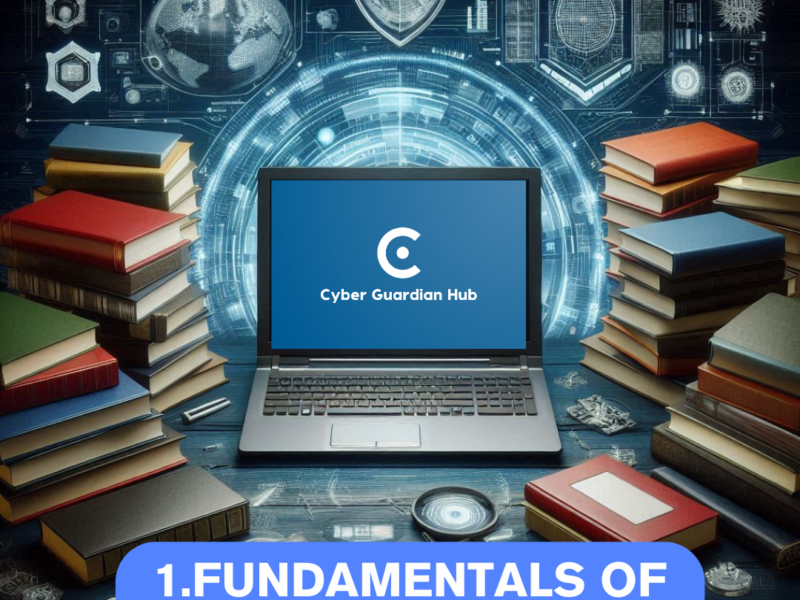Welcome to this free basic cybersecurity course! If you’ve always wanted to learn about this fascinating field but didn’t know where to start, you’re in the right place. With over 10 years of experience in the industry, I’ve worked in various areas of cybersecurity, from network protection to penetration testing, and my goal is to share that knowledge in a clear and accessible way for everyone.

This free basic cybersecurity course is designed for anyone interested in diving into the world of cybersecurity, regardless of prior experience. Here, you’ll learn the essential foundations needed to protect systems, networks, and data in an increasingly digital world. I’m committed to guiding you step by step so you can build a solid foundation in cybersecurity and develop the skills needed to tackle today’s challenges.
Get ready to embark on this exciting journey into learning cybersecurity!
Free Basic Cybersecurity Course – Fundamentals of Cybersecurity – Index
1.Fundamentals of Cybersecurity
- Confidentiality, Integrity, and Availability (CIA Triad): This is the cornerstone of information security, focusing on keeping data private, accurate, and accessible.
- Types of Cyber Attacks: Cover common attacks such as phishing, malware, ransomware, DDoS, and insider threats.
- Authentication & Authorization: The importance of multi-factor authentication (MFA) and role-based access control (RBAC).
- Encryption: Overview of symmetric and asymmetric encryption methods, including SSL/TLS, AES, and RSA.
2. Network Security
- Firewalls & Intrusion Detection Systems (IDS): Explain how firewalls filter traffic and how IDS detects suspicious activities in networks.
- Virtual Private Networks (VPNs): How VPNs protect privacy in public networks and their role in secure remote access.
- Wi-Fi Security: Discuss WPA3, the dangers of open networks, and common Wi-Fi vulnerabilities like KRACK attacks.
3. Cybersecurity Frameworks & Standards
- NIST Cybersecurity Framework: Teach the five core functions (Identify, Protect, Detect, Respond, Recover) for managing cyber risk.
- ISO/IEC 27001: A global standard for managing information security, detailing how to establish a security management system.
4. Cloud Security
- Shared Responsibility Model: Explain the division of security responsibilities between cloud service providers and users.
- Cloud Security Threats: Highlight risks like misconfigurations, data breaches, and weak APIs.
- Container Security: Cover tools and best practices for securing Docker containers and Kubernetes environments.
5. Incident Response & Disaster Recovery
- Incident Response Plan: Steps in preparing for, detecting, and mitigating a cyber incident.
- Forensics & Log Analysis: Teach techniques for investigating a breach and how to preserve digital evidence.
- Backup & Recovery Strategies: Discuss the 3-2-1 backup rule and how to ensure continuity after a cyber incident.
6. Penetration Testing & Ethical Hacking
- Penetration Testing Methodologies: Hands-on training in vulnerability assessment, scanning, and exploitation using tools like Metasploit and Burp Suite.
- Social Engineering: How attackers exploit human behavior, with techniques like pretexting and baiting.
- Bug Bounty Programs: Introduce students to real-world bug bounty platforms (e.g., HackerOne) and ethical hacking principles.
7. Governance, Risk Management, and Compliance (GRC)
- Risk Assessment: How to evaluate cybersecurity risks and prioritize resources.
- Regulatory Requirements: Cover laws like GDPR, HIPAA, and CCPA and how they shape data protection practices.
- Security Audits: Teach how to conduct internal and external security audits for compliance.
8. Cybersecurity for IoT Devices
- IoT Vulnerabilities: Discuss security challenges of IoT devices, including weak authentication and lack of encryption.
- IoT Security Best Practices: How to secure IoT networks using network segmentation, device hardening, and regular updates.
9. Artificial Intelligence (AI) and Machine Learning in Cybersecurity
- AI in Threat Detection: Explain how machine learning models are used for detecting anomalies and evolving cyber threats.
- Adversarial AI: Discuss risks where AI systems themselves are attacked, and methods to secure AI systems.
10. Zero Trust Architecture
- Principles of Zero Trust: Discuss why “never trust, always verify” is essential in modern cybersecurity.
- Implementing Zero Trust: Practical steps to transition from perimeter-based defenses to identity-based, least-privileged access.


